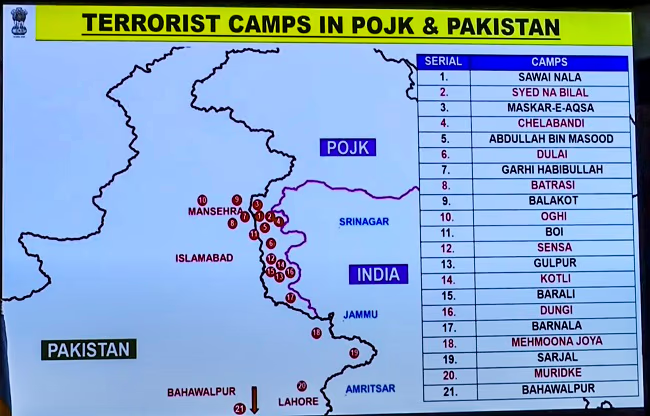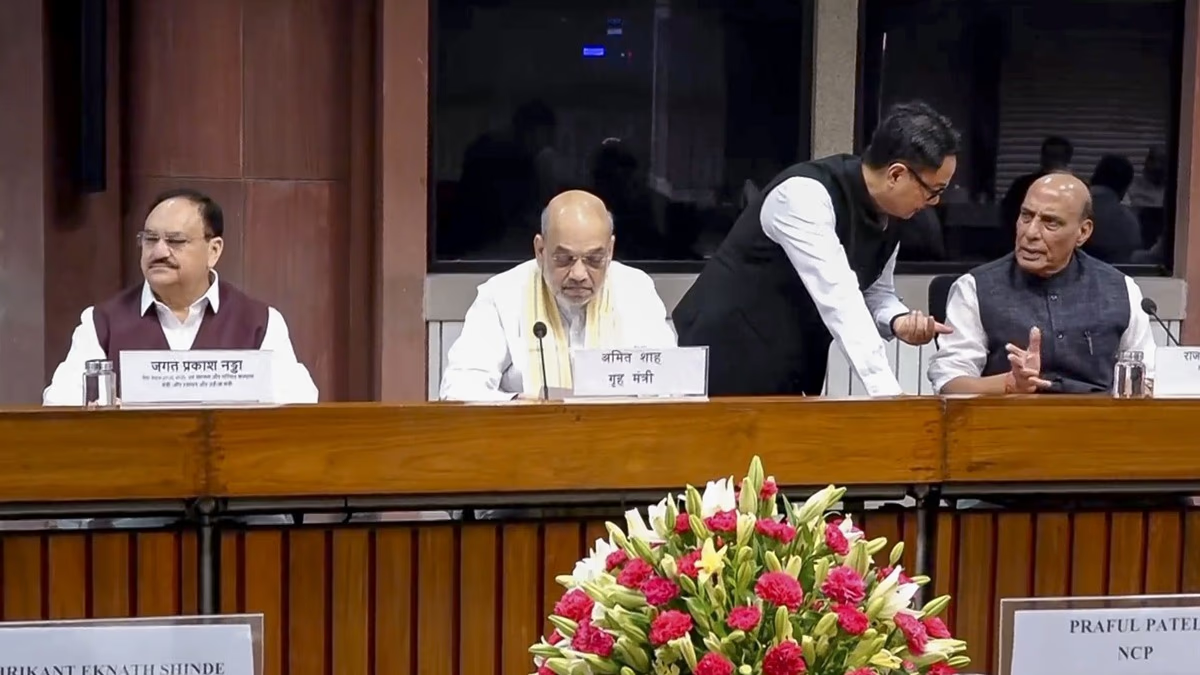In retaliation for the Pahalgam terrorist attack, the Indian Army launched an airstrike on Pakistan late on May 6, named Operation Sindoor. The unique strategy of this mission was its focus on precisely targeted terrorist camps. The Defense Ministry released a list of 21 terror camps that were obliterated within approximately 25 minutes. The operational dynamics and number of terrorists in these camps located in Pakistan and Pakistan-occupied Kashmir used to vary significantly.
Under Operation Sindoor, the Indian military targeted 21 locations across Pakistan and PoK, where terrorist bases were destroyed. These locations included Sawai Nala, Syedna Bilal, Maskar-e-Aqsa, Chelabandi, Abdullah bin Masood, Dulai, Garhi Habibullah, Batarsi, Balakot, Oghi, Boi, Senasa, Gulpur, Kotli, Barali, Dungi, Barnala, Mamoon Zoya, Sarjal, Muridke, and Bahawalpur.
Many sites hosted multiple camps; for instance, both Hizbul Mujahideen and Jaish-e-Mohammed had training camps in Sialkot. The focus was on major training camps during this strike.
Why Action in Both Pakistan and PoK?
Although both regions have similar goals, their operational methods differ. PoK camps are close to the Line of Actual Control, where newcomers aren’t present but seasoned trainees from Pakistan's camps stay.
Activities in PoK Camps

Source: aajtak
These camps are crucial for infiltrating Indian borders; new recruits are familiarized with geography and trained for infiltration. Often, militants hide in jungles, undergoing survival training. Camps like Gulpur, Syedna Bilal, or Sawai Nala emphasize route planning, functioning as forward operating bases for launching operatives across the Indian border swiftly.
PoK camps are compact, agile, and field-ready. Upon signals from the Pakistani military or ISI, these units activate operations. Moreover, economically disadvantaged or radicalized youth are converted into suicide attackers.
Prolonged Training within Pakistan's Camps
Camps inside Pakistan are more secure, away from the close surveillance of the LOC. Long-term training happens here, even for foreign terrorists, like Ajmal Kasab and David Headley, who were housed in Muridke.
These facilities aren't for minor skirmishes but rather for large-scale attack planning. Central Asians, Gulf, and Afghan radicals have historically been recruited here. Pakistani government and ISI heavily influence these camps, grooming young children into fully trained terrorists with no ties to the outside world.

Source: aajtak
Although 21 major camps were eradicated, many more could proliferate across Pakistan and PoK. Reports suggest most camps are mobile, frequently relocating to avoid detection, especially in PoK.
Types of Camps
- Training Camps: Here, militants hone skills in arms use, bomb-making, and infiltration. - Launch Pads: Temporary sites near LOC for crossing into India. - Radicalization Centers: Indoctrination of young boys into fanaticism for future militancy.
Why the Pakistani Government Supports Militants
Despite denials, terrorists have been integral to both government and military strategy, viewed as strategic assets. Destabilizing countries like India and Afghanistan expanded their influence. In the 1980s, the U.S. and Pakistan collaboratively deployed Mujahideen against the Soviet Union, fostering a taste for outsourced military power. Pakistan, knowing it can't win a direct conflict with India, continues terrorist activities instead.




